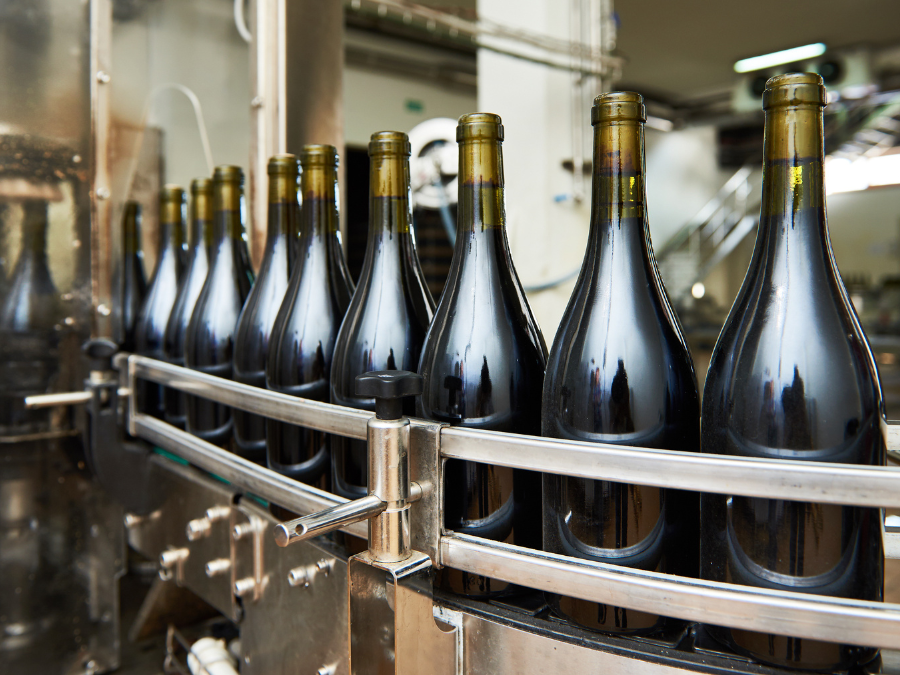
The global wine trade is showing hallmark signs of inflationary pressure – with sales reaching a record figure €37.6bn ($41.24bn) in 2022 but volumes struggling to keep up with previous years. Around two million hectolitres (mhl) less wine was drunk last year than in 2021. The ripple effects of Russia’s invasion of Ukraine coupled with continuing supply-chain disruptions meant wine prices rose and distribution remained a challenge.
In the below graphs, Just Drinks has pulled out some of the most interesting numbers from the International Organisation Of Vine and Wine’s (OIV) annual report, released last month.

Discover B2B Marketing That Performs
Combine business intelligence and editorial excellence to reach engaged professionals across 36 leading media platforms.
Global wine production remains steady
Global wine production declined slightly last year, falling by 1% to 258mhl – but this was only a little below its 20-year average. It has now sat around the 260mhl mark for four consecutive years. Expectations were beaten for global volumes, due in part to higher-than-expected harvest volumes in Europe.
Europe’s wine production rose by 4% compared to 2021, despite a series of adverse weather events and widespread drought.
The world’s top-three wine-producing countries are Italy (with 49.8mhl produced in 2022), France (45.6mhl), and Spain (35.7mhl). The three European countries form 51% of the world’s wine production.
Italy and Spain remained relatively stable in production terms compared to the previous year, while France bounced back from its production low of 2021, rising 21% (and 7% above its five-year average). Following devastating spring frosts, France’s 2021 wine production level was one of the lowest the country had seen since 2000.

US Tariffs are shifting - will you react or anticipate?
Don’t let policy changes catch you off guard. Stay proactive with real-time data and expert analysis.
By GlobalDataMarkets of note in volume and value changes
The value of exports outpaced their volume in Italy, Spain and France. France topped the charts in terms of value, selling €12.3bn worth of wine and scooping almost a third of wine’s export value globally.
Also of note in this area was Canada, one of just three countries not to report a reduction in volumes compared to 2021 (the others being Australia and New Zealand). While each of the three’s exports rose in both volume and value compared to 2021, the value of Canada’s wine exports rose by a whopping 21%.
Canada’s actual export value remains comparatively low, at €81m, the report notes, as 99% of wine sold is bulk. Meanwhile in the US, where 52% of the market is bottled wine, export value rose 11.8% to €1.4bn. Its bulk-wine market plummeted both in volume and value.
The US and Argentina saw the largest drops in volume of the major wine-producing nations, with bulk wine down 27% and 35% respectively.
Interest waning in China?
Wine production and consumption are slowing in China as demand falters. The country's production volumes were down 29% on 2021 figures, at 4.2mhl. It also imported 20% less wine in 2022.
The OIV estimates consumption in China was down 16% last year, from 10.5mhl to 8.8mhl. By comparison, consumption was over double that five years ago – at an estimated 17.6mhl in 2017. Recent consumption has been impacted by the pandemic as well as anti-dumping tariffs on Australian exports, which all but stopped the country’s wine entering China.
China’s area under vine was stagnant last year following years of slow-but-steady growth. Still, it is the third-largest winemaking country after Spain and France, with 10.8% of the world’s vines.
A number of explanations are oft-cited for slowing production of Chinese wine, including tricky growing conditions, domestic taxes, the dominance of a few, large producers and lack of incentive for newcomers, and competition from traditional Chinese liquor baijiu. China also has a thirst for Japanese rice wine, sake, and was the product’s largest export market in 2022.
Swiss wine production picks up

In Switzerland, a country known for safeguarding most of its wine production for domestic consumption, volumes rocketed by 63% last year. Like other cooler-climate regions, the country benefitted from high temperatures in Europe, which provided easier growing conditions at high-altitude sites.
Its recorded production of 1mhl was also 15% higher than the country’s five-year average.
Only an estimated 1% of the country’s wine is usually exported. Its official tourism page admits: “A trip to Switzerland is (almost) essential if you wish to discover Swiss wines.”
But perhaps last year’s surplus could provide an opportunity for international wine buyers to tap into a rare supply of Chasselas or Swiss Pinot.
South Africa’s wine struggles continue
South Africa’s wine landscape has been blighted by the severe drought which began in 2015, as well as more recent alcohol bans and ‘load shedding’ – intermittent state-controlled loss of power.
The country’s land under vine has been steadily decreasing for the past eight years, reducing a further 1% in 2022 to 124kha. By comparison, in 2014 there were 132kha of vineyards.
Production has also been decreasing, slowing 6% to 10.2mhl in 2022. However, the report notes this number is back to the average production levels recorded before the beginning of the 2015 drought. Export volumes decreased 8.7% to 4.4 mhl in 2022, while increasing 4% in value to €660m.
Meanwhile, South Africa’s estimated wine consumption in 2022 was the highest on record, standing at 4.6mhl – a 16% increase on 2021. Part of this spike could be attributed to the end of Covid-related alcohol-sale restrictions at the beginning of the year.
The country continues to struggle with energy, however, which could continue to deflate wine production in next year’s report. In February, the Consumer Goods Council of South Africa called for government action to support the food and beverage industry amid “crippling” load shedding. An almost two-month “state of disaster” ended last month but some emergency electricity-saving measures remain in place.
Moldova’s quality mission sees vineyard numbers decline
The world vineyard surface area is relatively stable, with countries like Moldova, Türkiye, Spain, Argentina and the US ripping up vines, while France, India, Russia and Brazil are planting at relative pace.
Moldova saw the largest decline in vineyard area of all major vine-growing countries, falling 11.6% to 122kha in 2022. Wine production sat at 1.4mhl in 2022.
This can in part be traced back to a wine sector restructuring program, which aimed to increase the quality of wine produced in the country and boost its presence on the international stage through geographical indications.
In the early noughties, Moldovan wine was largely a mass-produced, poor-quality product, the majority of which was exported to Russia – which then banned exports of both Moldovan and Georgian wine in 2006. Since then the country’s winemaking has seen a revival in quality.





